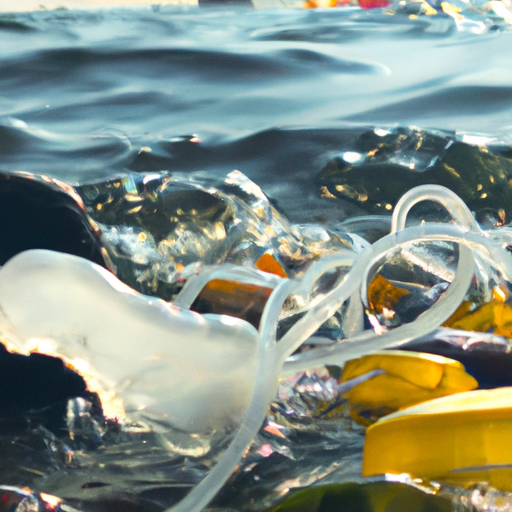-
Table of Contents
Why is plastic killing marine life?

Plastic pollution has become a global crisis, with devastating effects on marine life. The excessive use and improper disposal of plastic have led to the contamination of our oceans, rivers, and other water bodies. This article aims to shed light on the reasons why plastic is killing marine life and the urgent need for action to address this issue.
Plastic Harm
Plastic is a non-biodegradable material, which means it does not break down naturally over time. Instead, it breaks down into smaller pieces known as microplastics. These microplastics are often mistaken for food by marine animals, leading to severe health consequences. When ingested, plastic can cause internal injuries, blockages in the digestive system, and even death.
Furthermore, plastic pollution poses a significant threat to marine habitats. Plastic debris can entangle marine animals such as turtles, seals, and seabirds, causing injuries, suffocation, and drowning. The entanglement can restrict their movement, making it difficult for them to find food or escape from predators. This disruption to their natural behavior and habitat can have long-term negative effects on their population and overall ecosystem.
Marine Life Mortality
The impact of plastic pollution on marine life mortality is alarming. Studies have shown that millions of marine animals die each year due to plastic ingestion or entanglement. Sea turtles, for example, mistake plastic bags for jellyfish, their primary food source. The ingestion of plastic can lead to intestinal blockages, malnutrition, and ultimately death.
Similarly, seabirds often mistake small plastic particles for fish eggs or other prey. The ingestion of plastic can cause internal injuries, leading to starvation and death. It is estimated that over 90% of seabirds have plastic in their stomachs, highlighting the widespread nature of this issue.
Oceanic Ecosystem Threats
The presence of plastic in our oceans poses a significant threat to the entire marine ecosystem. Plastic pollution disrupts the delicate balance of marine food chains and can have cascading effects on various species. When smaller marine organisms ingest plastic, it accumulates in their bodies. As larger predators consume these smaller organisms, the plastic moves up the food chain, becoming more concentrated and harmful.
Additionally, the chemicals present in plastic, such as bisphenol A (BPA) and phthalates, can leach into the water, posing a toxic threat to marine life. These chemicals can disrupt the endocrine systems of marine animals, affecting their reproductive capabilities and overall health. The long-term consequences of such disruptions can be detrimental to the survival of various species and the overall biodiversity of our oceans.
Addressing the Issue
The plastic pollution crisis requires immediate action to protect marine life and preserve our oceans. Governments, industries, and individuals all have a role to play in addressing this issue. Here are some steps that can be taken:
- Reduce Single-Use Plastics: Governments should implement policies to reduce the production and consumption of single-use plastics. Individuals can also make a difference by opting for reusable alternatives and avoiding unnecessary plastic packaging.
- Improve Waste Management: Proper waste management systems should be established to ensure that plastic waste is collected, recycled, or disposed of responsibly. This includes implementing recycling programs and raising awareness about the importance of proper waste disposal.
- Support Research and Innovation: Investing in research and innovation can help develop sustainable alternatives to plastic and improve recycling technologies. Governments and industries should allocate resources to support such initiatives.
- Educate and Raise Awareness: Education plays a crucial role in tackling plastic pollution. By raising awareness about the impact of plastic on marine life, individuals can make informed choices and take action to reduce their plastic footprint.
In conclusion, plastic pollution is a grave threat to marine life and the health of our oceans. The harmful effects of plastic on marine animals, the high mortality rates, and the disruption of oceanic ecosystems highlight the urgent need for action. By addressing the issue at its root causes and implementing sustainable solutions, we can protect marine life and ensure the long-term health of our oceans.